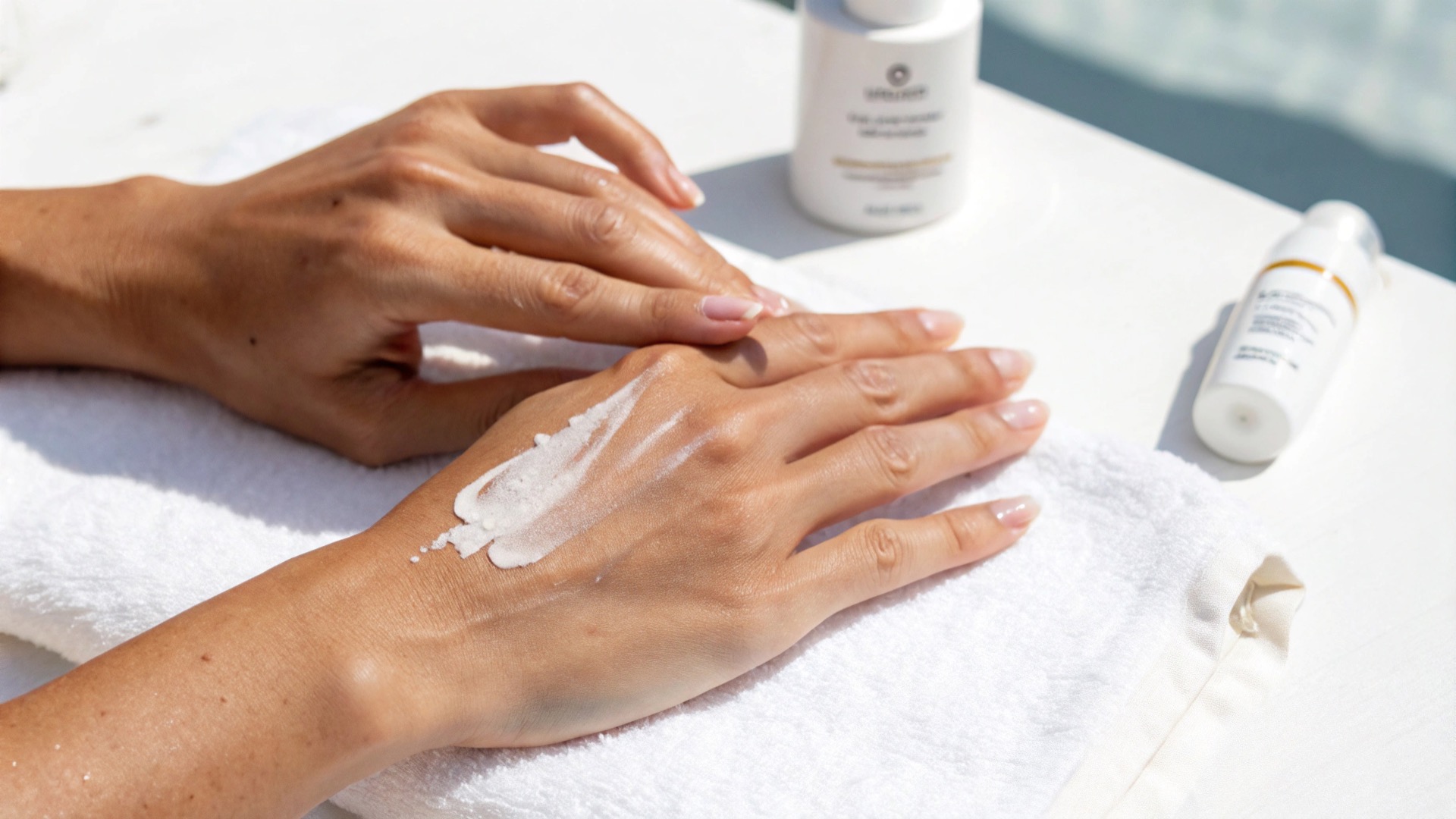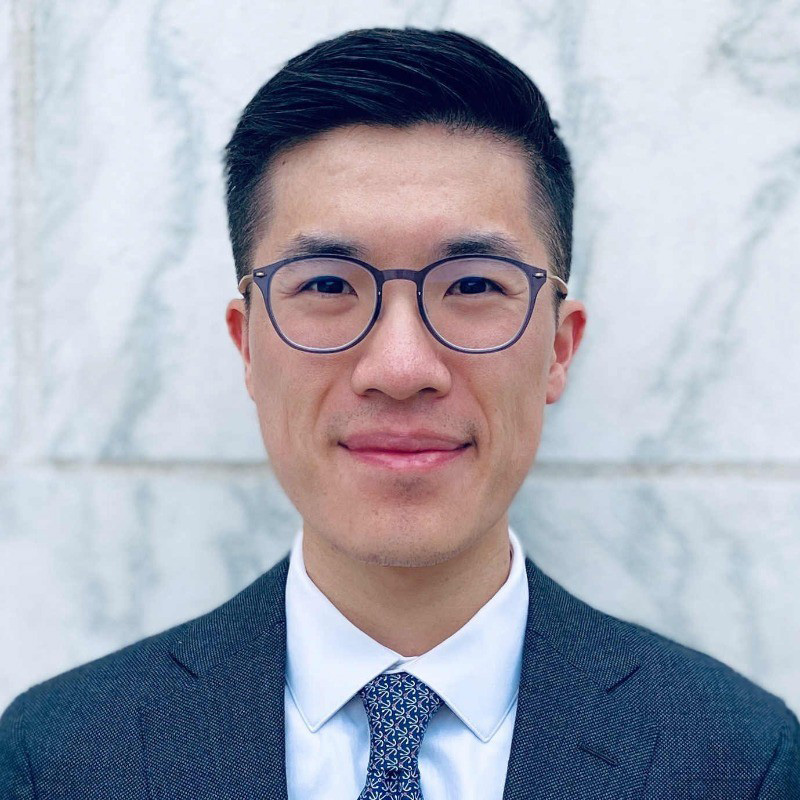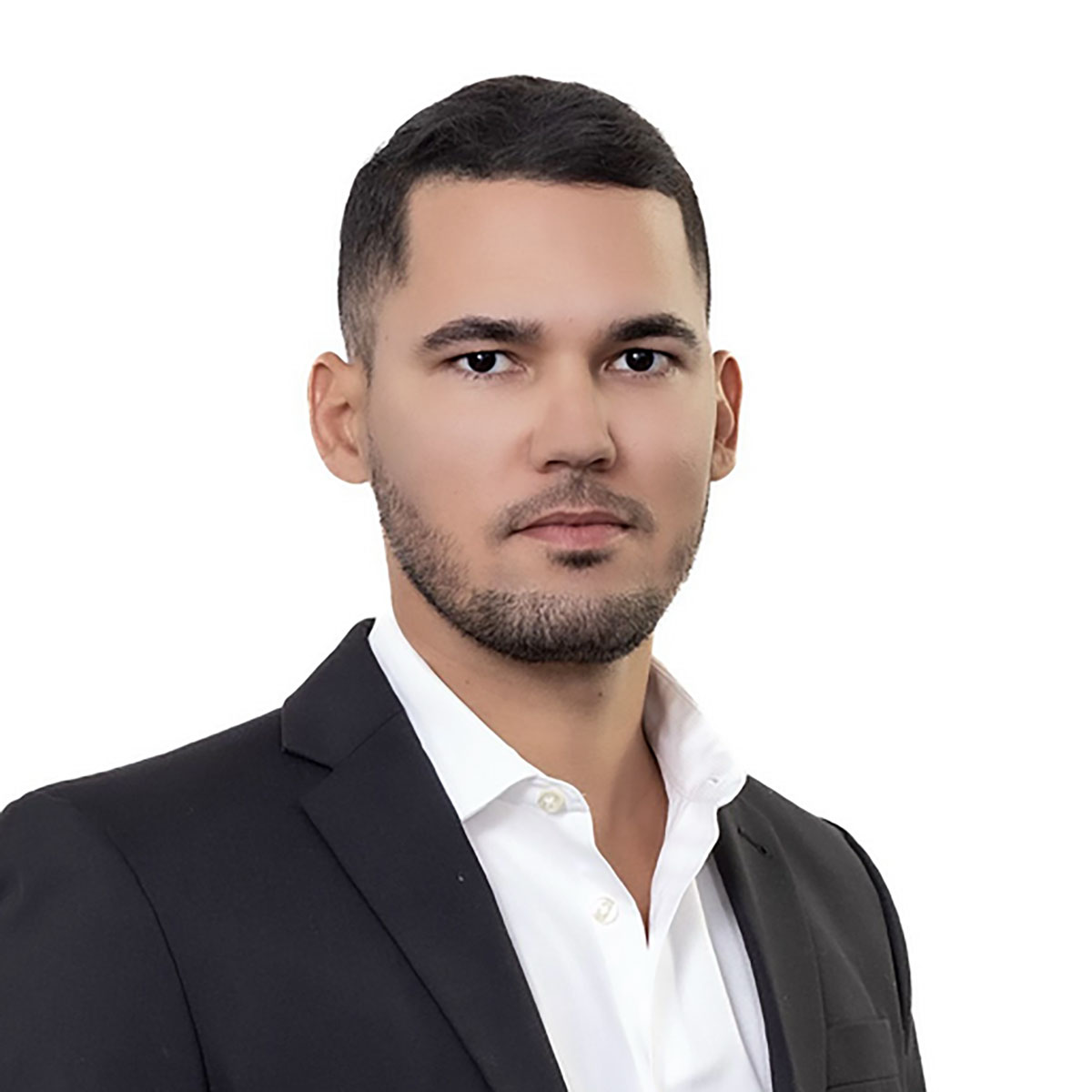Key takeaways
- Studies show a 20% increase in telomere length and a 10-37% reduction in senescent cells. Works through angiogenesis, inflammation reduction, antioxidant enhancement, and stem cell activation
- Improves memory, attention, and executive function in the aging population. Enhances cardiovascular function, muscle capacity, and overall vitality
- FDA-approved therapy with decades of clinical use and a well-documented safety profile.
Overview
Picture this: you’re 65 years old, but your cells are functioning like they’re 45. Sounds like science fiction? It might not be. Scientists have discovered that hyperbaric oxygen therapy for anti-aging could be the key to turning back our biological clocks at the cellular level.
Aging feels inevitable – our energy drops, our skin wrinkles, our minds slow down, and our bodies just don’t bounce back like they used to. What if you could slow down or even reverse some of these aging processes?
The aging process involves gradual changes at the cellular and molecular level, and maintaining healthy cells is crucial to slowing or reversing this decline. What if there were a scientifically backed therapy that could make your cells younger?
Recent groundbreaking research shows that hyperbaric oxygen therapy (HBOT) can reverse biological aging markers, including lengthening telomeres and reducing cellular senescence.
As someone who has spent years understanding anti-aging therapies and their real-world applications, I’ve seen the evolution from wishful thinking to legitimate scientific breakthroughs. The research on HBOT represents one of the most promising developments in longevity science, positioning it as a cutting-edge anti-aging therapy.
What is hyperbaric oxygen therapy?
Hyperbaric oxygen therapy involves breathing 100% pure oxygen while inside a pressurized hyperbaric chamber at higher-than-normal atmospheric pressure. Hyperbaric chambers are specially designed to safely deliver this therapy, accommodating single or multiple patients and ensuring controlled oxygen delivery. Think of it as giving your body a concentrated oxygen boost that reaches places regular breathing can’t.
During HBOT, you’re exposed to oxygen levels 10-15 times higher than usual, delivered at 1.5 to 3 times atmospheric pressure. This combination dramatically increases the amount of oxygen dissolved in your blood plasma, improving blood oxygen carrying capacity and delivering healing oxygen to tissues throughout your body.
Originally developed to treat decompression sickness in divers, HBOT has evolved into a powerful medical therapy. The FDA currently approves it for 14 conditions, including wound healing, carbon monoxide poisoning, and radiation injuries. But exciting new research reveals its potential extends far beyond these traditional uses. The effect of hyperbaric oxygen on tissues includes promoting angiogenesis, enhancing cellular repair, and modulating immune responses, which may slow aging and improve tissue health.
The therapy creates what scientists call the “hyperoxic-hypoxic paradox” – brief periods of high oxygen followed by normal levels that trigger protective cellular responses similar to those seen during beneficial stress like exercise. Fluctuations in tissue oxygen levels initiate regenerative processes such as angiogenesis and stem cell proliferation, contributing to tissue repair and anti-aging effects.
How does HBOT reverse biological aging?
Telomere lengthening and cellular rejuvenation
The most remarkable finding in HBOT anti-aging research involves telomeres – the protective caps on our chromosomes that shorten as we age. A groundbreaking 2020 study found that HBOT increased telomere length by over 20% in healthy aging adults. In this study, peripheral blood mononuclear cells were used to measure changes in telomere length, providing a reliable indicator of cellular aging and regeneration.
Telomeres act like biological shoelaces, protecting our genetic material during cell division. When they become too short, cells enter senescence or die. This process is fundamental to aging. Telomere shortening is accelerated by oxidative stress, particularly from reactive oxygen species, which can damage DNA and promote cellular senescence. HBOT appears to activate telomerase, the enzyme responsible for rebuilding these protective caps.
The most dramatic improvements were seen in B cells, which showed increases of 25-37% in telomere length after just 60 HBOT sessions over three months.
Reducing cellular senescence
HBOT doesn’t just lengthen telomeres – it reduces the number of “zombie cells” (senescent cells) in your body. These damaged cells stop dividing but don’t die, instead releasing inflammatory substances that accelerate aging. This reduction is achieved through senescent cell clearance, a process that occurs at the cellular level and is critical for maintaining tissue health.
The same landmark study showed reductions of 10-37% in senescent T-helper cells. This is significant because senescent cell accumulation is one of the primary drivers of aging and age-related disease. The immune cells involved in this process, such as phagocytic cells, play a key role in identifying and removing senescent cells, further supporting the anti-aging effects of HBOT.
The Oxygen paradox effect
Here’s where HBOT gets fascinating: despite using high oxygen levels, it creates protective effects against oxidative stress. This seeming contradiction occurs because intermittent hyperoxia triggers your body’s natural antioxidant defenses.
During HBOT sessions, the reactive oxygen species generated can induce significant oxidative stress, which in turn triggers adaptive cellular responses such as increased expression of antioxidant genes and activation of protective pathways.
The oxidative stress response kinetics—how quickly and effectively cells respond to and recover from oxidative stress—are crucial in determining the balance between damage and repair.
As a result, cells experience brief oxidative stress that activates protective genes like Nrf2, leading to increased production of antioxidant enzymes. Between sessions, these protective mechanisms remain active while oxygen levels return to normal, creating a net protective effect.
The multiple pathways of HBOT anti-aging benefits
Enhanced angiogenesis and blood flow
HBOT stimulates the growth of new blood vessels through several mechanisms. It activates hypoxia-inducible factor-1 (HIF-1), which triggers the release of vascular endothelial growth factor (VEGF) and other angiogenic factors.
HBOT specifically promotes endothelial cell angiogenesis, which is essential for tissue regeneration, wound healing, and restoring blood supply.
Better blood flow means better nutrient delivery and waste removal at the cellular level. Studies show HBOT can increase regional blood flow and improve microcirculation throughout the body.
Inflammation reduction and immune modulation
Chronic low-grade inflammation (“inflammaging”) is a hallmark of aging. HBOT reduces this by modulating immune cell activity and decreasing pro-inflammatory cytokines like IL-1β, IL-6, and TNF-α while increasing anti-inflammatory factors like IL-10.
The therapy also affects immune cell populations, such as macrophages and lymphocytes, helping restore a more youthful immune profile and reducing the chronic inflammation that accelerates aging.
The decline of the immune system with age contributes to increased susceptibility to illness and the accumulation of damaged or senescent cells; by influencing immune cells involved in these processes, HBOT may help counteract some aspects of immune system deterioration.
Stem cell activation and mobilization
HBOT mobilizes stem cells from bone marrow and enhances their function. Research shows it can increase circulating stem cell numbers and improve their regenerative capacity. HBOT also supports stem cell proliferation, which is crucial for tissue repair and overall cellular regeneration in aging and injury.
In regenerative therapies, the use of allogenic mesenchymal stem cells has shown promise for promoting tissue repair, angiogenesis, and anti-inflammatory effects. Stem cell treatment, often combined with HBOT, is being explored as a complementary approach to restore tissue structure and function.
Additionally, HBOT plays a significant role in promoting fibroblast cell proliferation, which accelerates wound healing and supports the regeneration of structural components such as collagen.
This stem cell activation contributes to tissue repair and regeneration throughout the body, helping maintain the cellular renewal processes that decline with age.
Real-world anti-aging benefits of HBOT
Cognitive enhancement and brain health
The most immediately noticeable benefits occur in cognitive function. A randomized controlled trial of 63 healthy aging adults found significant improvements in:
- Attention and information processing speed
- Executive functions
- Memory performance
- Regional cerebral blood flow
These improvements are linked to enhanced cognitive functions, including better neuronal health and reduced age-related mental decline.
Research also indicates that hyperbaric oxygen therapy (HBOT) can promote brain regeneration by stimulating endogenous neural stem cells, which play a key role in neurogenesis and neural repair.
Additionally, HBOT has been studied for its regenerative effects in patients with traumatic brain injury, showing potential to improve neurocognitive functions and support brain tissue healing.
These improvements persisted weeks after treatment ended, suggesting lasting neuroplasticity changes rather than temporary effects.
Physical performance and cardiovascular health
HBOT enhances physical performance in aging adults through multiple mechanisms:
- Increased VO2 max: Studies show improvements in maximum oxygen consumption, a key marker of cardiovascular fitness
- Enhanced cardiac perfusion: Better blood flow and oxygen delivery to the heart muscle
- Improved muscle function: Enhanced oxidative capacity and reduced age-related decline. Aging leads to deterioration of muscle cells, resulting in loss of muscle mass and decreased strength. The mitochondrial energy transduction system plays a crucial role in cellular energy production, supporting muscle performance and tissue repair. HBOT has also been shown to positively affect human sympathetic neuronal function, which can influence autonomic regulation and support overall cardiovascular and neural health.
One study found significant improvements in both maximal oxygen consumption and first ventilatory threshold – markers that typically decline with age.
Skin rejuvenation and tissue health
HBOT promotes skin health through:
- Increased collagen production and density
- Enhanced angiogenesis in skin tissue
- Reduced signs of both intrinsic aging and photoaging
- Improved elastic fiber length and stability
HBOT also stimulates tissue regeneration by enhancing cellular repair mechanisms and promoting fibroblast cell proliferation, which leads to improved collagen synthesis and skin rejuvenation. In clinical applications, engineered tissue promotes graft integration and repair, supporting better outcomes in skin graft procedures.
Additionally, HBOT is effective in treating soft tissue infections, including necrotizing soft tissue infections, by improving oxygen delivery and supporting the healing of severe diseases.
These effects occur at the cellular level, addressing the fundamental processes that cause skin aging rather than just surface symptoms.
Bottom line
The science behind hyperbaric oxygen therapy for anti-aging represents a genuine breakthrough in longevity medicine. Unlike many anti-aging interventions that target single pathways, HBOT appears to address multiple fundamental aging processes simultaneously.
The evidence is compelling: measurable reversal of cellular aging markers, cognitive enhancement, improved physical performance, and better overall health span.
While more research is needed to optimize protocols and understand long-term effects, current findings suggest HBOT could become a cornerstone of science-based anti-aging medicine.
If you’re considering HBOT for anti-aging purposes, consult with a qualified hyperbaric medicine physician who can assess your situation and develop an appropriate treatment protocol. The future of aging may not be about accepting decline, but about giving our cells the tools they need to maintain youth and vitality.
Frequently asked questions (FAQs)
- How long do the anti-aging effects of HBOT last?
Research suggests the benefits can persist for months after treatment. The telomere lengthening and cellular improvements appear to be long-lasting, though the exact duration varies among individuals based on genetics, lifestyle, and overall health. Most protocols involve 60 sessions over 3 months, with some practitioners recommending periodic “maintenance” sessions. The cognitive and physical performance benefits have been documented to last at least 1-3 months post-treatment in studies.
- Is HBOT safe for healthy aging adults?
HBOT has an excellent safety profile when administered properly. The most common side effects are mild and temporary, including: minor ear discomfort (similar to airplane pressure changes), temporary vision changes in about 55% of patients, and fatigue after sessions. Serious complications are rare, especially in healthy individuals. However, HBOT requires medical supervision and isn’t suitable for everyone (those with certain lung conditions or severe chronic renal failure with GFR below 30, for example).
- What are the costs and treatment frequency for anti-aging HBOT?
HBOT for anti-aging typically costs $200-400 per session, with complete protocols requiring 40-60 sessions. Total costs range from $8,000 to $24,000. Since this is considered elective/cosmetic, insurance usually doesn’t cover it. Most research protocols use daily sessions (5 days per week) for 8-12 weeks. A typical anti-aging protocol involves 60 sessions over 3 months, followed by potential maintenance sessions every few months.
- What’s the optimal age to start HBOT for anti-aging?
Most anti-aging research focuses on adults 60 and above, but there’s no strict minimum age. The therapy may be most beneficial when aging processes have begun, but before significant decline occurs, typically starting in the 50s or 60s. HBOT can complement other evidence-based anti-aging interventions, such as exercise, proper nutrition, hormone optimization, and other longevity treatments, in comprehensive anti-aging protocols.
- How do you know if HBOT is working for anti-aging?
Benefits may include improved energy, better sleep, enhanced cognitive function, and better exercise tolerance. Some clinics offer biomarker testing (telomere length, inflammatory markers) to track biological age changes, though these tests can be expensive. Important note: Always consult a qualified healthcare provider before starting HBOT, as certain medical conditions may exclude individuals from treatment.
References
- Zhang, Y., et al. “Hyperbaric oxygen therapy for healthy aging: From mechanisms to clinical implications.” Frontiers in Aging, 2022.
- Efrati, S., et al. “Hyperbaric Oxygen Therapy Increases Telomere Length and Decreases Immunosenescence in Isolated Blood Cells: A Prospective Trial.” Aging, 2020.
- Boussi-Gross, R., et al. “Physical enhancement of older adults using hyperbaric oxygen: a randomized controlled trial.” BMC Geriatrics, July 2024.
- Gupta, M., Rathored, J. “Hyperbaric oxygen therapy: future prospects in regenerative therapy and anti-aging.” Frontiers in Aging, May 2024.









